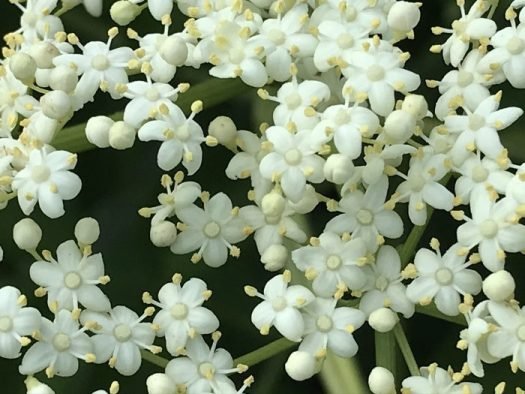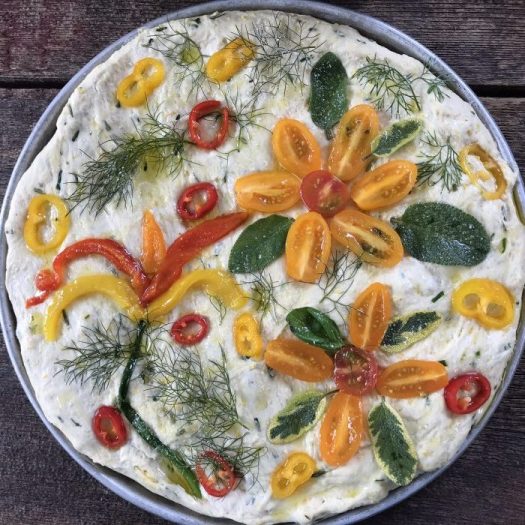Elderflowers are reaching a new level of popularity because they are easy to grow and use in recipes, and they have many health benefits. The sweet umbels of creamy-colored flowers that can reach 12″ wide are very fragrant and have a unique smell, something like floral, creamy, and summery, all in one package!
You can use elderflowers in seasonal recipes and learn to identify and look for them. The fragrant summer flowers are a great addition to desserts, drinks and salads. Full of antioxidants and bioflavonoids, elderflowers contain many health benefits, primarily boosting the immune system and helping with sinus and upper respiratory infections.
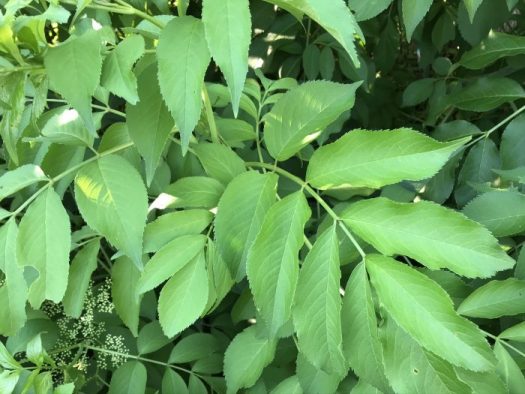
The small purple berries are also packed with antioxidants and vitamins, and some experts recommend elderberry to help prevent and relieve cold and flu symptoms.
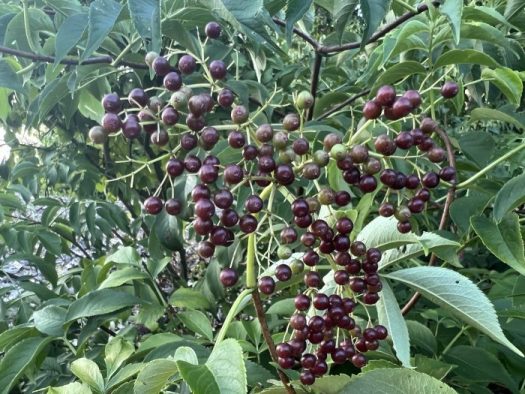
All cultivars look very similar with their bush-like plant structure, compound leaves, and large, beautiful clusters of white flowers that develop into purple-hued berries. They bloom in late June and July, look like snowball hydrangeas, but are flat instead of umbrella-shaped, and produce amazing edible fruits. This is a plant that can go from being a food to a medicinal product. It is commonly found on roadsides or in fields, and you can also easily grow this large shrub in your own garden or forage locally.
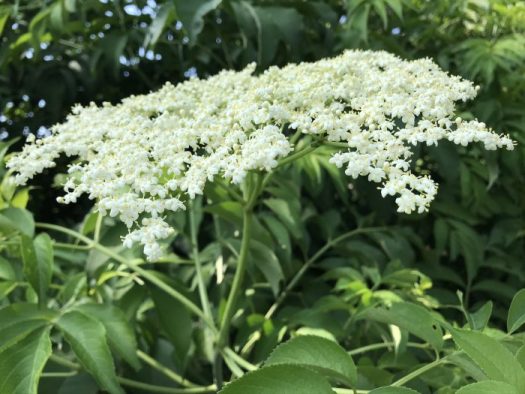
The berries can be used to make juices, jams, chutneys, cakes and wine, and the flowers are boiled with sugar to make a sweet syrup or infused into tea. The flowers or ‘elder’ can also be consumed fresh in salads.
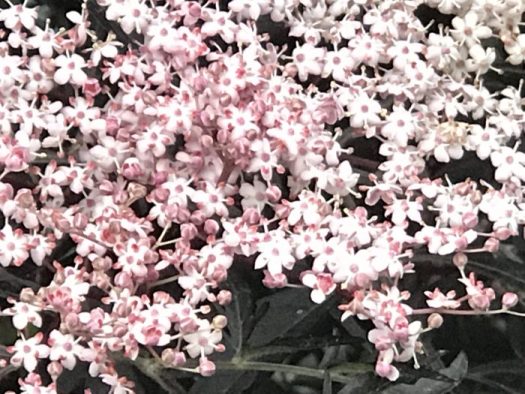
A great addition to the landscape, the elderberry or Sambucus canadensis, blooms profusely and, if you can beat the birds, the fruit is very tasty. After flowering is completed, dark purple berries form. But the leaves, stems, bark, and roots are toxic, so it is important to be careful not to include any of these when processing elderberry or elderflower preparations. The only edible parts of the elder tree are the berries and flowers, so be careful! Like many other plants like rhubarb, you have to know which parts to eat.
Watch this interesting video about elderflower.
There are other varieties of Elderberry that are very interesting to use in the landscape.
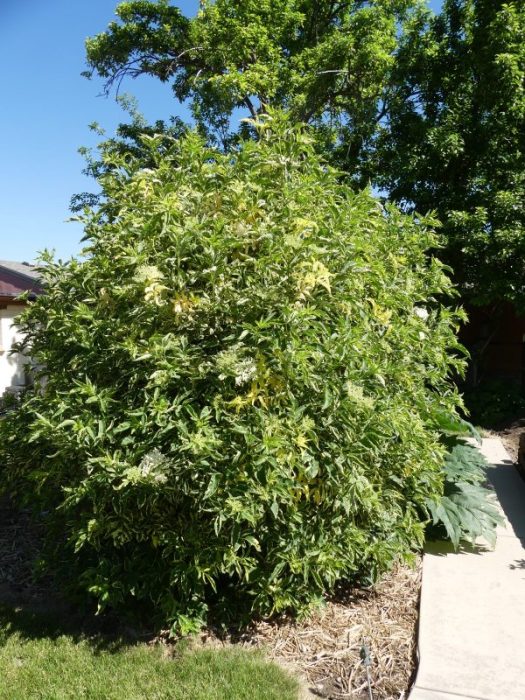
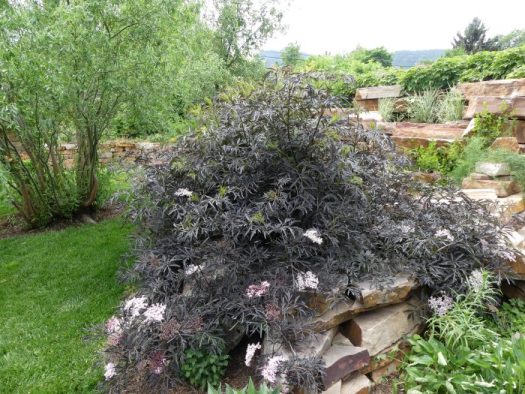
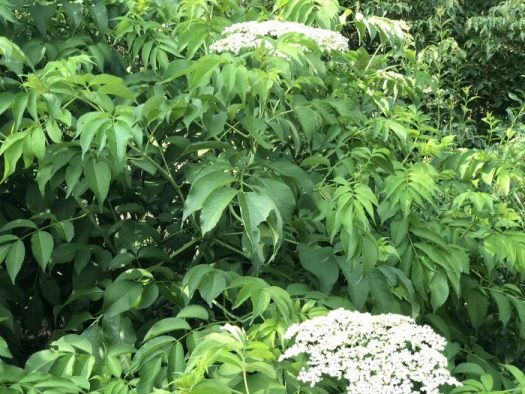
Growing in leaps and bounds using suckers, one elderberry is enough for my needs. In fact, I remove many suckers and trim them back to the ground in early spring to control their growth. The deer leave it alone as it is planted in a high deer traffic area and never touch it.
Making elderflower liqueur
Recently, I collected elderflower umbels in preparation for making elderflower cordial. Elderflower concoctions and scents are very popular in Europe in all their forms, but are relatively new to the US.
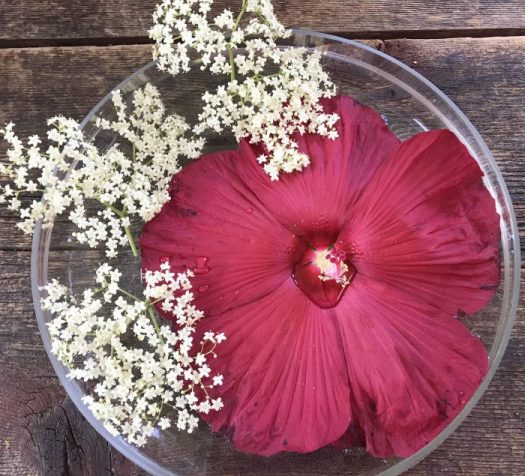
Fragrant and refreshing, summer elderflower cordial is easy to make. All you need is plenty of elderflower and some vodka! It really is easy and will darken slightly to a champagne color over time. Mix cordial with sparkling water or add it to wine, prosecco or champagne. I like to use it in a gin and tonic.
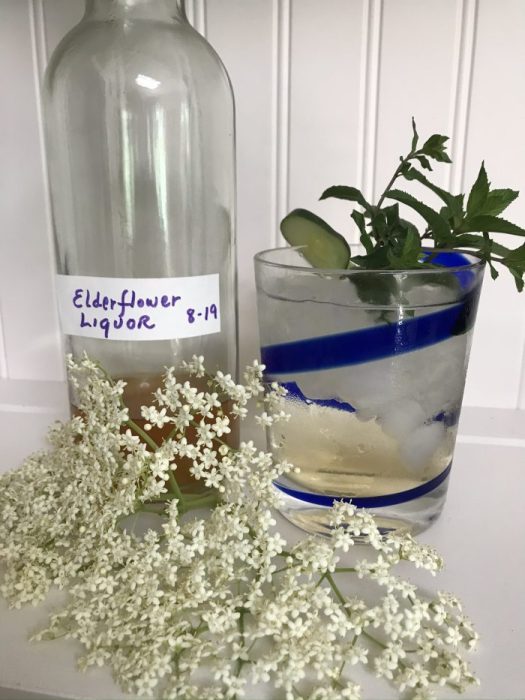
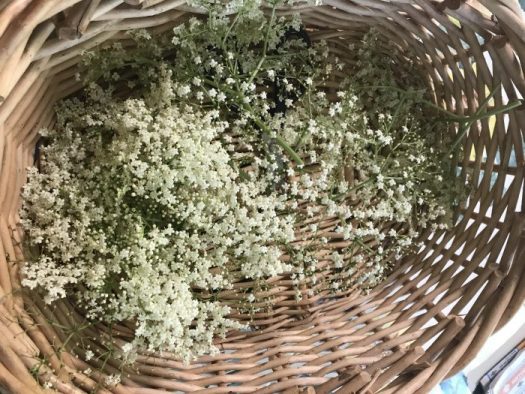
Collect fragrant elderflowers to make cordial.
Tips for Harvesting Elderflowers
- Avoid collecting in contaminated areas
- Wait until the small flowers have fully opened and have not started to turn brown.
- Pick in the morning before the heat of the day, as its flowers wilt quickly.
- The flowers should smell flowery and sweet, without unpleasant odors.
- Always use them as soon as possible after collecting them.
- Dry them for later use by placing them on an old window in a dark space for a week or use a food dehydrator.
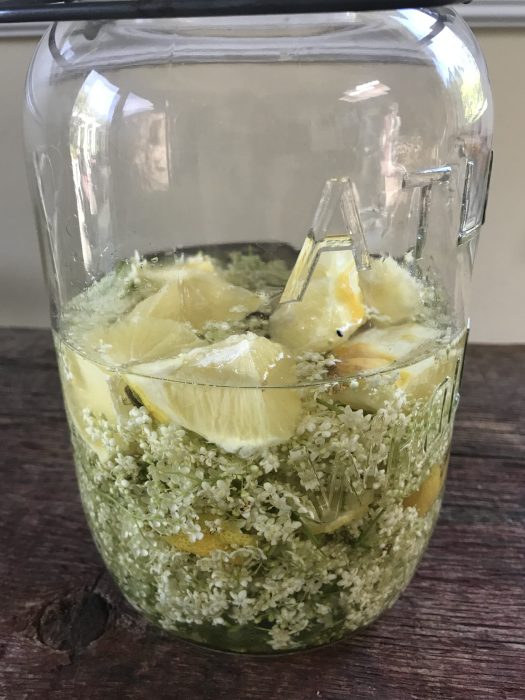
Homemade St Germain Liqueur or Elderflower
Elderflower liqueur is the alcoholic version of elderflower cordial.
- 20 large elderflower heads
- 1 liter (1 US quart) vodka
- 1 lemon cut
- 1 quart mason jar
- 1/2 cup sugar
- 1/3 cup of water
- Pick your elderflowers in the morning before it gets too hot
- Shake each flower head well to get rid of the bugs, although you will strain them out later.
- Cut the tiny flower heads from the thick stems, leaving only the thin stems attached to the flowers. The thick stems are toxic.
- Place in the glass jar, along with the cut lemon and pour the vodka until it completely covers the lemon and the flowers. (This should prevent the flowers from turning brown, but don’t worry, as a few will only result in a darker liquor and won’t ruin the flavor.)
- Place it in a cool, dark place for two to four weeks.
- Make a sugar syrup by gently heating the sugar with the water until the sugar has dissolved. Let cool before using.
- Strain the elderflower, lemon and vodka liquid through muslin or cheesecloth into a bowl.
- Add half the sugar syrup and taste for sweetness before adding the remaining syrup if necessary. I use all the syrup and find that it is not too sweet.
- Pour into clean sterilized bottles and leave for two months in a cool, dark place to mature.
- It keeps for years but will darken over time.
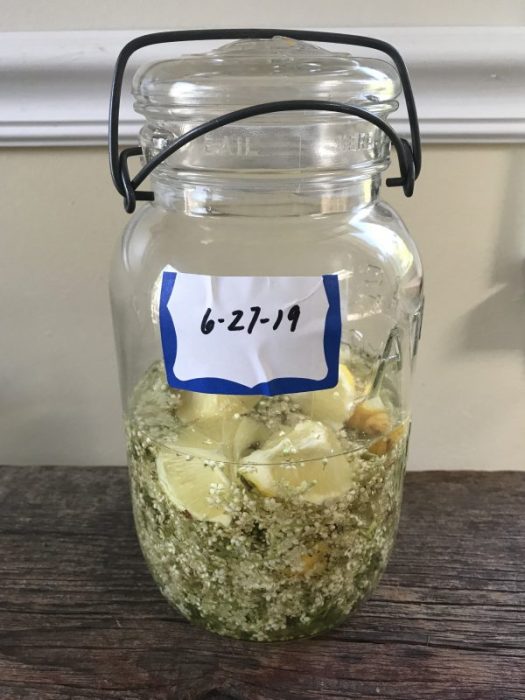
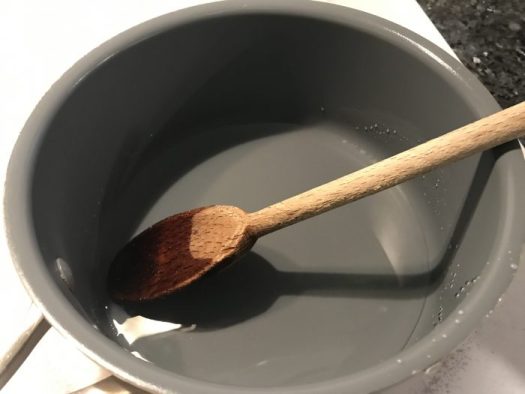


Start using!!

